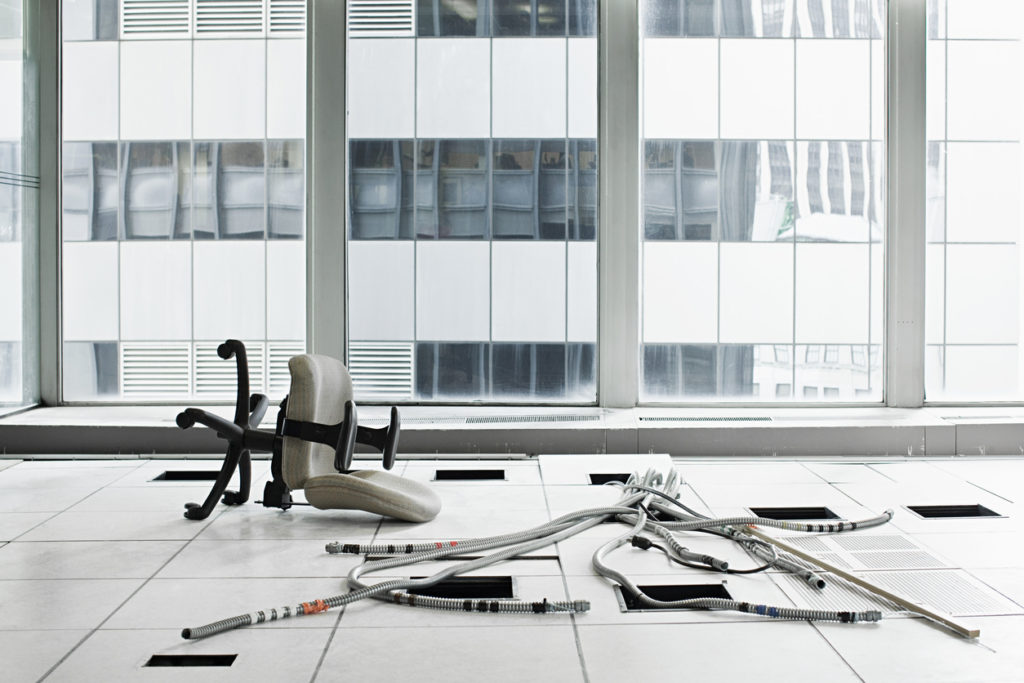
They say that necessity is the mother of all invention. Well, the Covid pandemic certainly sparked a wave of innovation created by the sudden vacation of the work place and the mass adoption of home working. Millions of us are now working from our kitchens communicating via video platforms like Zoom which as a result has, in the space of a few months, achieved a market capitalisation larger than the world’s seven biggest airlines – combined! Despite employers’ previous reluctance to fully embrace home working the feedback has, up until now, been fairly positive. The key question for real estate owners is how this experience will shape occupier behaviour in the longer term?
Humans are a resilient bunch. Necessity has required us make home working work, however after a number of months it is starting to show its limits. Many people find homeworking socially isolating, some struggle to separate work from private life and then there are the challenges of working in a cramped home with children.
Of course there are times when focused work requires solitude and few distractions, which can be achieved at home however we are social beasts and we thrive by collaborating with others and in this respect Zoom can only achieve so much.
Central to our productivity is health and wellbeing. It is estimated that more than a third of UK office workers have found working from home mentally challenging and this has affected different people in different ways. The impact of poor mental and physical health has become more apparent and risen up the business agenda in recent years. As a result, it is likely that post pandemic, occupiers will focus heavily on quality in offices in their drive to attract talent and boost productivity. At Cordatus we have seen evidence of this trend in two recent City office refurbishments. More than one new tenant cited the provision of the right amenities as the key factor in deciding to locate in our buildings.
Some commentators have described the post pandemic future of the office as bleak but its not. Its just different. Enforced homeworking has shown that people appreciate the social and collaborative aspects of office life and want flexibility. If a building offers this and boosts wellbeing in the right location it will be very much in demand. After all, you only need to look at the tech giants who have heavily invested in high-quality office buildings when they could have most people working from home. For them, getting people to work under one roof to foster creativity makes good business sense. Much the same can be said of the rest of the business community.
What about the quantum of space required? Well, the need to comply with rules on social distancing means that companies are unlikely to cut their office space as soon as lockdown rules are relaxed. In theory, businesses might actually need more office space per person. However, that assumes that companies can afford to rent additional space, which is debateable in the current economic environment. It also assumes that most staff can travel safely to the office without using public transport. That might be possible in Amsterdam, Copenhagen and Edinburgh where most people either cycle, or drive to work, but is unrealistic in major cities like Berlin, London, Paris, or Milan where traffic congestion and limited parking means that the majority of commuters have no alternative to public transport.
The real issue for most businesses is how many staff they can accommodate safely within their existing office. The answer varies according to the design of the building and whether floors are open-plan, or cellular, but space planners estimate that most offices can probably only safely accommodate between 25% – 40% of staff. It is interesting to note that in many cases this is considerably less than the percentage of staff who now want to return to the office.
In addition to social distancing, businesses also need to install hand sanitisers, remove landline telephones, arrange regular deep cleans and consider other measures such as increasing air humidity, upgrading air filters, adding more bike racks, temperature checks at entrances and mobile apps which track people within the building.
On balance, it certainly appears to be an over-reaction to assume that the office is dead, given its enduring advantages. Some businesses will be tempted to continue with large scale remote working after the pandemic and cut their office space. But we expect that the majority of occupiers will revert to prior working patterns, albeit it more people may work one day a week at home.
In our view, new technologies such as block chain, robotic process automation and voice recognition probably pose a bigger threat to the office, as they reduce the number of people working in call centres and back office administration. However, the demand for offices in city centres and close to universities should continue to increase, driven by the growth in tech, life sciences and professional services.
One thing is for sure whether you are an office occupier or an investor; property selection is now more multi-faceted than ever before and critical to investment performance.


